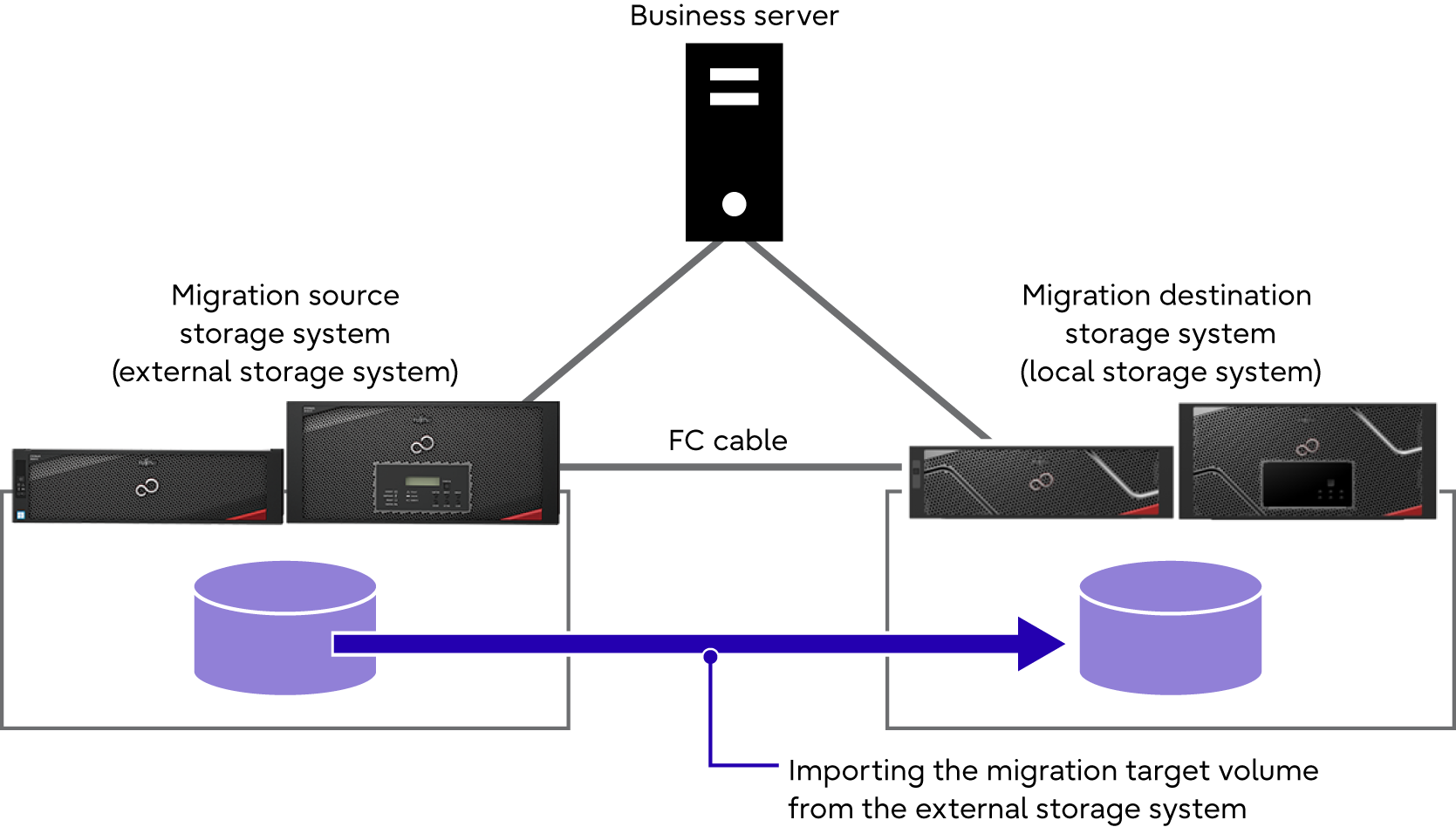Non-disruptive Storage Migration
Non-disruptive Storage Migration is a function that migrates the volume data from an old storage system to volumes in a new storage system without stopping a business server in cases such as when replacing a storage system.
The connection interface between the migration source storage system (external storage system) and the migration destination storage system (local storage system) is only FC. In addition, the direct connection and switch connection topologies are supported.

Item |
Quantity |
|---|---|
Maximum number of multipath connections between the local storage system and the external storage system (per external storage system) |
8 paths |
Maximum number of ports in the external storage system that can be connected from the local storage system (per FC-Initiator port) |
32 ports |
Maximum number of migration target volumes that can be imported to the local storage system (*1) |
8,192 (ETERNUS DX600 S6) 16,384 (ETERNUS DX900 S6, ETERNUS DX8900 S6) |
Maximum number of migration target volumes in the external storage system that can be imported simultaneously to the local storage system |
512 |
| *1 | : | The number of migration target volumes that are imported to the local storage system is added to the number of volumes in the local storage system. |
Connect the external storage system to the ETERNUS DX (local storage system) directly or via a switch. After a connection is established, prepare for the data migration.
Create External Drives in the local storage system. Create External RAID Groups using the External Drives and then create volumes in the External RAID Groups. The volumes are called External Volumes in the local storage system and they take over the information of the migration source volume in the external storage system. Set host affinity to the External Volumes.
Add multipath connections between the local storage system and the business server. After disconnecting the multipath connection between the external storage system and the business server, use RAID Migration to read data from the migration target volume in the external storage system and write data to the migration destination volume in the local storage system.
Data consistency is ensured because the data remains in the migration source volume for consolidated management during the data migration.
Only FC ports (connected in the FC-Initiator mode) are supported for connections with external storage systems.
The Non-disruptive Storage Migration License must be registered to use this function.
For details on the license, contact your sales representative.
Only data migrations from the external storage system to the local storage system is supported.
Data migrations from the local storage system to the external storage system or between external storage systems is not supported.
The local storage system volume returns the same information (UID, vendor ID, and product ID) as the External Volume even after a migration is completed.
Do not set the copy operation suppression, the cache parameters, and the Volume QoS for the External Volume.
The functions that can be used for the External Volumes are delete, rename, and RAID migration. Other functions cannot be used until the data migration is successfully completed.
Migration destination volumes in the local storage cannot be used for Storage Cluster even after the migration is completed.
Make sure to delete the Non-disruptive Storage Migration License after the Non-disruptive Storage Migration is complete.



